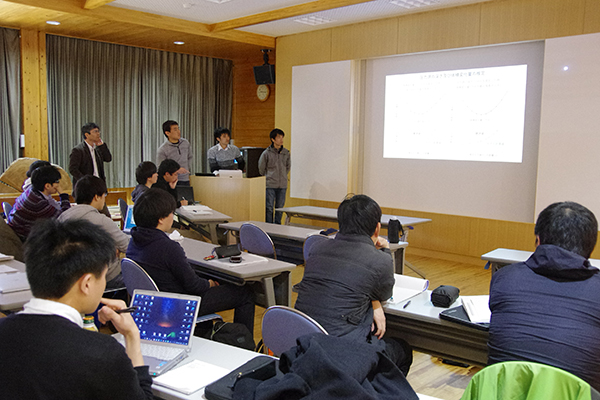
Developing an understanding of volcano phenomena requires knowledge of observations and surveys performed in the field of active volcanoes. The precision and limitations of observations must be accounted for when implementing disaster mitigation measures and designing effective observation schemes for the future. We conducted the first field study over five days, March 12 to 17, 2017, at Mount Kirishima (Ebino, Miyazaki) at the border of Kagoshima and Miyazaki Prefectures. Twenty-one undergraduate and graduate students, studying geophysics, geology/petrology, and geochemistry, and ten faculty members from ten universities participating in the consortium, from Hokkaido to the north and Kagoshima to the south, participated in the field study.
The objective of this field study was to deepen interest and understanding of other fields related to volcanology. We assigned students specializing in geophysics to the geology/petrology team and students specializing in geology/petrology and geochemistry to the geophysics team. Lectures on physical measurements and geological surveys, along with practical training at the active volcano site provided a unique experiential learning experience.
On the first day, poster presentations doubled as introductions for the students. With the presentation material dispersed across the floor, the students eagerly discussed this material with the other students and the faculty members. Comments from students included, "I was surprised by the breadth of volcano research."
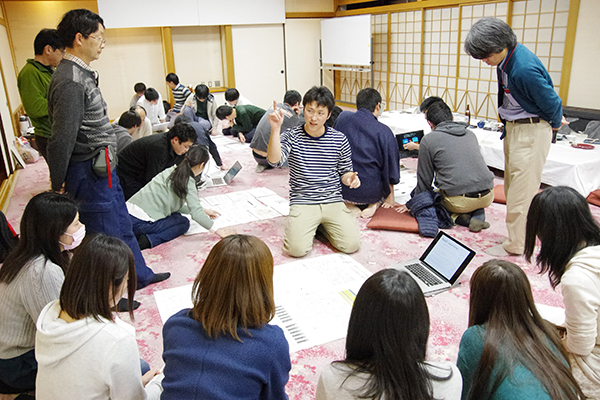
First, Assistant Professor Tsuyoshi Miyamoto (Tohoku University) explained that the characteristics of Mount Kirishima's activity can be deciphered from geology and geodesy and paleomagnetism records using an integrative approach. He also explained the complexity of volcanic phenomena and provided an overview of important issues that need to be resolved from the dual perspectives of disaster mitigation and academic research.
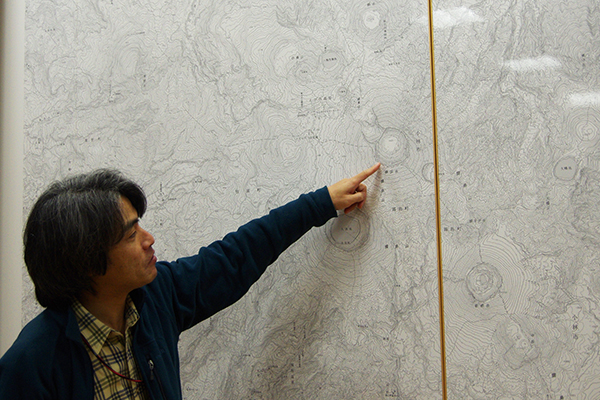
Next, Associate Professor Tomofumi Kozono (Tohoku University) presented research characterizing the various types of eruptions at Mount Kirishima Shinmoedake in 2011 using many types of observations. In particular, he noted the high-precision determination of magma-discharge rate, which is a measure of the eruption size, and the resulting remarkable advance in the physics of volcanic eruptions.
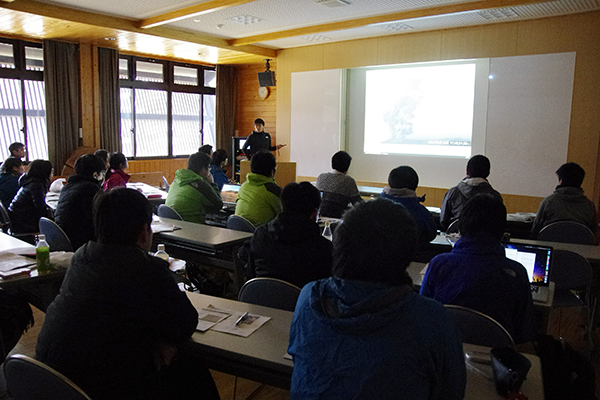
Due to rain, instead of a field trip of Mount Kirishima Karakunidake, we observed two volcanic bomb fall areas from the 2011 eruption of Shinmoedake. Seeing these vestiges of the eruption at close range, a student commented "I felt the energy of the eruption that I could not get just from photographs."
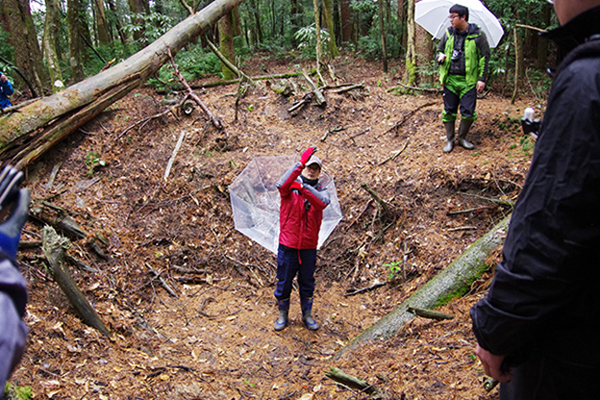
On the third day, with good weather, we conducted a field trip of Mount Kirishima Karakunidake (elevation 1,700 m). Observing approximately 20 volcanoes with large craters, including Shinmoedake, Onamiike, and Ioyama, students learned the diversity of eruption types, and were introduced to Kirishima volcanic group, which is sometimes called "a museum of volcanoes."
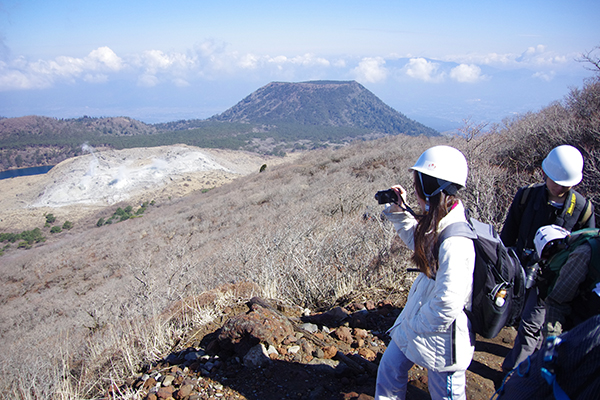
After learning the ways to reconstruct past volcanic activities from geology and geography from Professor Mitsuhiro Nakagawa (Hokkaido University) and Professor Masao Ban (Yamagata University), we performed a field trip of the foothills. We observed lava flows, tephra exposures, wide-spread tephra, and pyroclastic flow deposits, and learned about geological survey techniques.
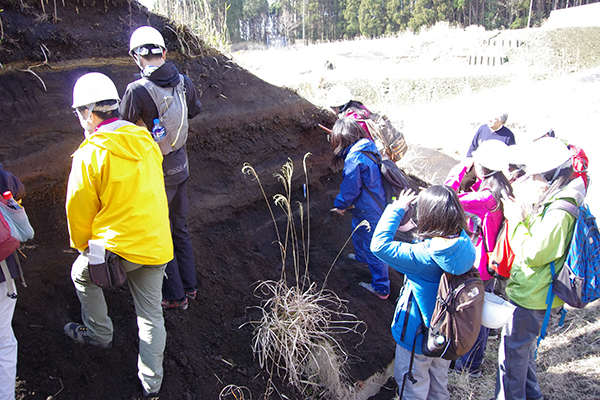
After lectures from Associate Professor Katsuya Kaneko (Kobe University) and Senior Researcher Akihiko Tomiya (National Institute of Advanced Industrial Science and Technology) on the basics of volcanic rock petrology, we learned how to extract magma cooling and eruption type information from actual observations of rock-forming minerals and volcanic ash under microscopes.
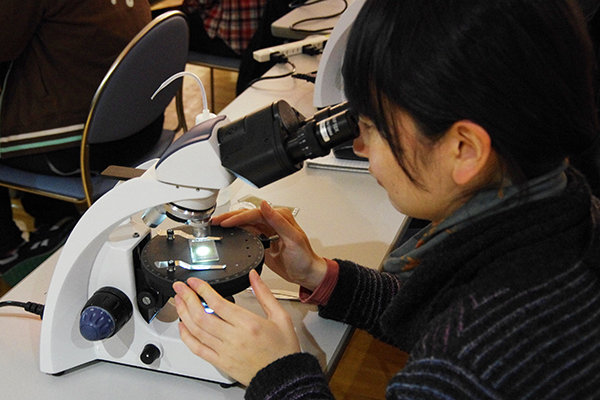
Associate Professor Takeshi Matsushima (Kyushu University) and Keigo Yamamoto (Kyoto University) lectured about the principles and methods of leveling, a survey method for volcanic ground deformation. They also explained the recent inflation observations in Ioyama, which was found in a recent leveling survey.
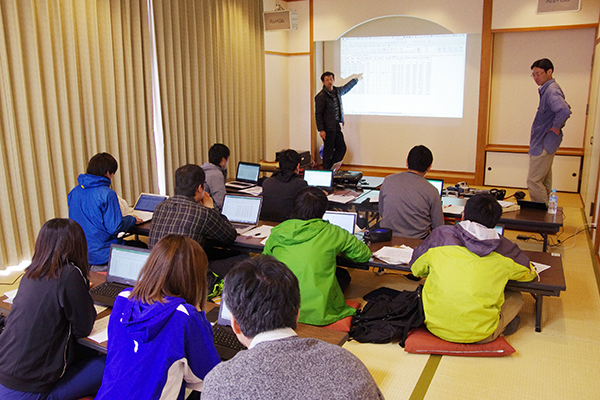
Splitting into two teams, we performed leveling surver near Ebino Plateau to a precision better than 1 mm. Using data collected by Associate Professor Matsushima and others in 2015, we found that the point closest to Ioyama had bulged by 15 mm. In addition, we analyzed an underground pressure source, and reported the results in the next day's presentation.
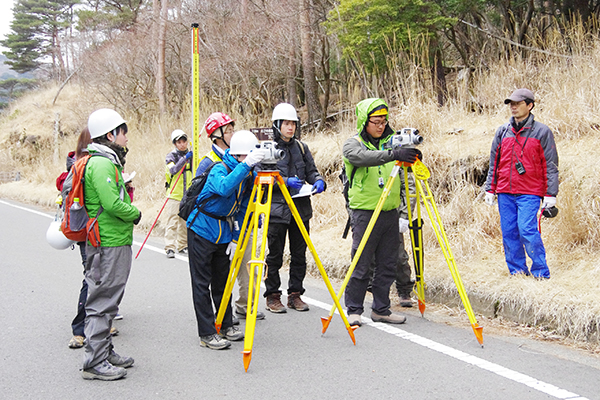
A presentation session was held on the last day. Students separated into seven groups, and used slides to explain the inspection and practical training details, data analysis results, and their interpretations. There were lively question and answer sessions among the students during the discussions of the results and interpretations. At the end, the faculty members offered critiques to close out the six-day field study.
